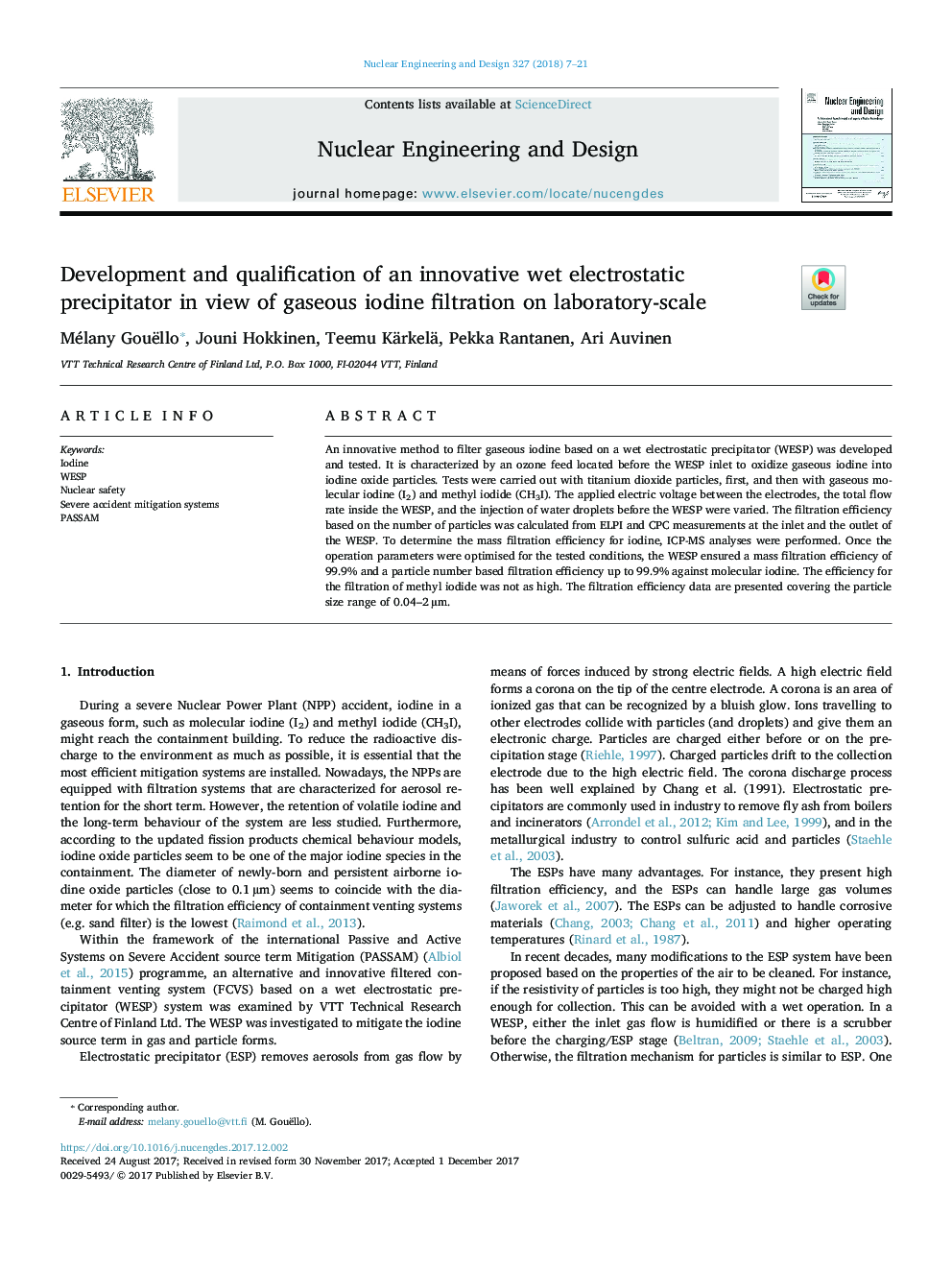| Article ID | Journal | Published Year | Pages | File Type |
|---|---|---|---|---|
| 6759498 | Nuclear Engineering and Design | 2018 | 15 Pages |
Abstract
An innovative method to filter gaseous iodine based on a wet electrostatic precipitator (WESP) was developed and tested. It is characterized by an ozone feed located before the WESP inlet to oxidize gaseous iodine into iodine oxide particles. Tests were carried out with titanium dioxide particles, first, and then with gaseous molecular iodine (I2) and methyl iodide (CH3I). The applied electric voltage between the electrodes, the total flow rate inside the WESP, and the injection of water droplets before the WESP were varied. The filtration efficiency based on the number of particles was calculated from ELPI and CPC measurements at the inlet and the outlet of the WESP. To determine the mass filtration efficiency for iodine, ICP-MS analyses were performed. Once the operation parameters were optimised for the tested conditions, the WESP ensured a mass filtration efficiency of 99.9% and a particle number based filtration efficiency up to 99.9% against molecular iodine. The efficiency for the filtration of methyl iodide was not as high. The filtration efficiency data are presented covering the particle size range of 0.04-2â¯Âµm.
Keywords
Related Topics
Physical Sciences and Engineering
Energy
Energy Engineering and Power Technology
Authors
Mélany Gouëllo, Jouni Hokkinen, Teemu Kärkelä, Pekka Rantanen, Ari Auvinen,
